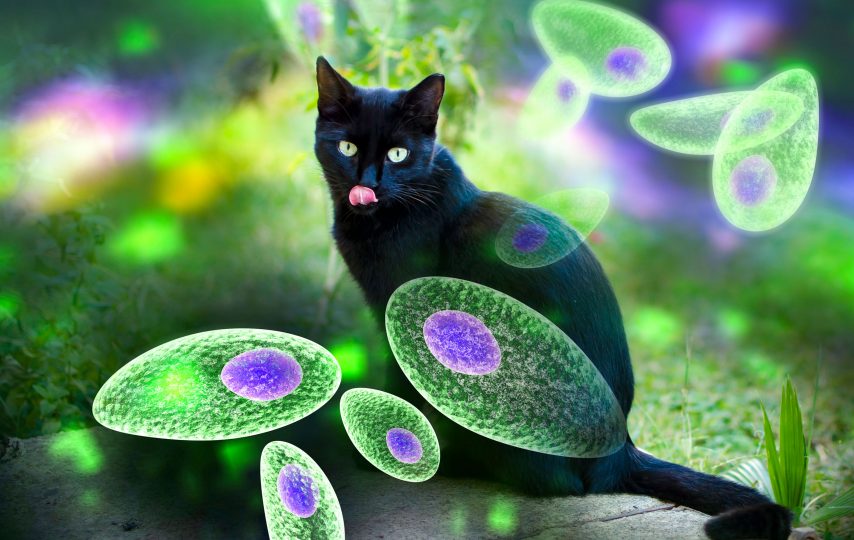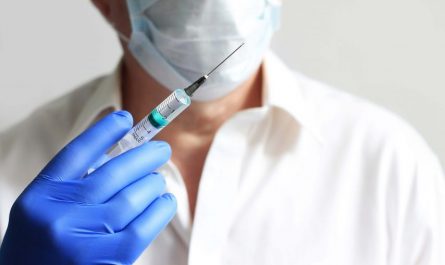We often hear the term “parasitic disease”, but not all of us wonder what exactly is meant by this term. It seems to us that this problem only affects people who neglect their health and live in a very unsanitary environment. Unfortunately, there are many cases where even in very clean homes there is a risk of bacterial contamination.
Fortunately, in many cases the likelihood of developing one of these conditions may be minimal. Even if the disease develops, it can be non-invasive and its treatment will bring the desired effect. Panic is not advisable, it is better to replace it with caution and common sense. More about parasitic diseases can be presented on the example of toxoplasmosis, which is one of the best known ailments of this type.
Toxoplasmosis in cats and humans – infection
Toxoplasmosis is by far one of the most common parasitic zoonoses. It is caused by Toxoplasma gondii infection . How can we get infected? Larvae carriers, i.e. all mammals as well as birds can be intermediate hosts. Cats are creatures that carry a developed form of bacteria. As final hosts, they pass the bacteria on to humans. Fortunately, most often it ends up being an infection, with a relatively small number of carriers getting sick.
How is it infected? This is done by eating contaminated animal meat that contains Toxoplasma gondii cysts . Usually it is undercooked or not cooked at all. Another method is infection by eating food that was contaminated with feces or the saliva of animals carrying the mentioned bacteria.
In cats, infection usually occurs when the meat of a rodent that has been carrying the protozoa is eaten. One symptom of toxoplasmosis in rats is a loss of sense of fear of a potential threat, which in turn makes it easier for the cat to hunt it down. In this way, the risk of bacteria being passed on increases, which can also harm humans.

Toxoplasmosis in a cat – symptoms of the disease
The risk of toxoplasmosis should not cause panic among all pet owners. A healthy and well-groomed cat should not be a carrier of Toxoplasma gondii . To be safe, you should watch your pet behave and have it checked regularly by your vet.
Cysts are mostly shed by young cats. Infected for the first time, they most often suffer from intestinal toxoplasmosis. In the active infection phase, they transmit protozoa via the faecal route. The main symptoms of the disease will then be elevated temperature. The cat will experience abdominal pain and lack of appetite. There are also diarrhea and vomiting. Unfortunately, it is difficult to observe pain in an animal, so special attention should be paid to its eating habits and responses to eating a meal.
If we have a female cat that gives birth to dead kittens, this should also be considered a warning signal. It is very likely one of the symptoms. Kittens with congenital toxoplasmosis die in the prenatal period. By seeing the repeatability of this pattern, it is possible to deduce the health of the mother of such kittens.
Toxoplasmosis has symptoms in a cat that are imperceptible
Even the most caring owners may have trouble noticing the symptoms that are characteristic of toxoplasmosis. Especially with parenteral infection. It is difficult to determine if a cat is apathetic and if the changes in mood are disease-related. Virtually only veterinarians can examine an animal’s lymph nodes and see if they are enlarged.
It is similar with neurological symptoms, i.e. headaches, vision problems and a disturbed labyrinth. Respiratory problems may be more noticeable, but hardly anyone will consider it a symptom of a disease. Troubling symptoms include blindness, seizures, or loss of movement. Therefore, toxoplasmosis is very easy to be overlooked or confused with other diseases. Only professional research will tell us more about the ailments our animal experiences.
Cat toxoplasmosis – a study
If we want to find out if our cat is struggling with toxoplasmosis, we must seek professional help. Your vet will tell us more about this. As a prophylaxis, he will probably advise us to deworm the animal every three months and to take care of hygiene. If a cat has been raised at home since childhood, does not go outside and eats canned food, it is almost certainly not a carrier.
There are two ways to test your cat for Toxoplasma gondii . The stool sample shows whether it contains oocytes (primary cells) of the bacteria. If the result is negative, the animal is not in the infectious phase. A sick cat infects for a maximum of three weeks, so this method will give us only partial information about the health of the pet. The cat may still be sick, but it does not threaten our health. So we know that we are safe, but we are still not sure about the health of the pet. If we want to obtain a result that will clearly indicate whether our cat has ever had contact with the disease, we must allow the blood test to be performed. Based on the research, you can tell if your cat needs treatment and what steps should be taken next.

Cat toxoplasmosis – treatment
If our animal is sick, the vet will definitely tell us the right course of action. Treatment of the clinical form of toxoplasmosis is carried out by administering appropriate chemical compounds. The cat receives a gradually increasing dose of clindamycin hydrochloride over a period of four weeks. She takes it orally twice a day. There is also a monthly intramuscular treatment with the use of clindamycin phosphate. Other substances that can be used during the treatment are: pyrimethamine, sulfonamides and trimethoprim. These chemical compounds are used, inter alia, in in the treatment of diseases such as malaria, pneumonia and neurological diseases. They have a very high efficiency. We should remember that it is the veterinarian who decides the course of treatment and we should not act against his recommendations. It is also worth asking him about recommendations regarding the diet and care of the cat. We must pay attention to it when our pet needs special care. If we follow what the doctor ordered, the cat will recover quickly.
Toxoplasmosis symptoms – alarming signals
Most people who become infected are unaware of it. The disease is asymptomatic and is not a problem for most people who do not struggle with other ailments. However, if we feel unwell, it could mean that we have one of the four forms of toxoplasmosis.
Cerebral toxoplasmosis is the most severe, but if we are people who have a well-functioning immune system, we are not exposed to it. Patients with AIDS or organ transplants who experience unexpected weakness must consult a physician immediately. Infection with this form of Toxoplasma gondii occurs in the form of meningitis, a symptom that cannot be ignored.
The decrease in immunity in a milder form also applies to general toxoplasmosis. It manifests itself as changes in the liver, lungs or heart muscle. However, if we are not struggling with diseases of these organs, we should not feel threatened.
Nodal toxoplasmosis is sometimes manifested by fever, muscle pain and migraines. Enlarged lymph nodes are a significant symptom. We can tell for ourselves if they are actually bigger by a simple palpation test. When we observe such a change in ourselves, we should go to a specialist to rule out other diseases. This is not a cause for panic, only a signal informing us that it is worth visiting a doctor.
The most troublesome form of this disease is ocular toxoplasmosis. It will be evidently felt for us. It usually manifests as inflammation of the choroid and retina, which does not seem to be alarming at first. Many people had contact with this type of infection and were able to deal with it relatively quickly with the help of an ophthalmologist. A disturbing symptom is only the remission of the disease, which informs us about a more serious problem. It is a good idea to see a doctor as soon as possible, because if this form of Toxoplasma gondii infection is not treated, serious and permanent visual disturbances can occur.
Keep in mind that this problem only affects a very small number of people with toxoplasmosis. As you know, none of us want to go through this, even if the symptoms are not felt to us. Fortunately, there are several aspects we should pay attention to if we want to avoid contamination. Cat owners should consider good hygiene when cleaning their litter box. We should also wear protective gloves when working in the garden. It is also worth paying attention to where our children play. Cats like sandboxes, so our kids must always wash their hands thoroughly after playing. Adequate hygiene is recommended for all of us. Caring for cleanliness and eating only well-prepared meat will reduce the likelihood of contracting toxoplasmosis, as well as other parasitic diseases.

Toxoplasmosis in pregnancy – what should you pay attention to?
The issue of infection with zoonotic parasitic diseases is much more serious in the case of pregnant women. Ladies who are expecting a baby may not feel the symptoms of toxoplasmosis. The problem is with the child. Toxoplasma gondii protozoa penetrate the fetus and may be life-threatening, and will almost certainly affect its further development. Congenital toxoplasmosis manifests itself mainly by changes of a neurological nature. It will be microcephaly or hydrocephalus, retinitis and also intracerebral calcifications. Most of these factors retard a child’s mental development.
How to prevent this from happening? It is worthwhile to be thoroughly examined at the stage of pregnancy planning. A blood test for the presence of anti-toxoplasma IgG and serum IgM antibodies will determine if a woman has ever had Toxoplasma gondii infection . If the mother is sick, the greatest danger lies in the earliest stages of pregnancy. The threat decreases over time, which does not mean that the problem can be underestimated.
If the tests show that the expectant mother is sick, the doctor will administer spiramycin, which will not harm both the woman and the baby. Treatment covers the entire pregnancy and minimizes the likelihood of developing the disease.
Toxoplasmosis is a condition that we can avoid. The condition is to maintain hygiene in your environment, take care of your own and your cat’s cleanliness. It is worth paying attention to what we eat and the quality of food products, including drinking water. Caution is undoubtedly conducive to maintaining health, also in this case.



